Special Report
What Americans Bought to Prepare for the Pandemic

Published:
Last Updated:

It’s human nature (and makes good sense) to stock up on necessities as natural disasters like hurricanes or blizzards approach. It’s hardly surprising, then, that people also did exactly that as the pandemic approached, in preparation for possible quarantines or lockdowns.
What did people buy? The coupon-tracking site Coupon Follow surveyed about a thousand consumers for a report, “COVID-19 Preparation Spending Behavior.”
Surveyors recorded what specific items respondents bought the most and how many buyers purchased more of those items than usual. In general, they found that consumers purchased an average of 2.5 weeks’ worth of supplies pre-pandemic in the course of an average of three shopping trips.
Some 17% of respondents said in retrospect that they had bought too much, and 50% added that they had spent too much money on what they bought. This isn’t surprising as it’s difficult to know how to buy food for a 14-day quarantine.
The survey also found differences in generational shopping patterns: The number one item baby boomers and Gen Xers purchased was toilet paper, while millennials’ shopping list was headed up by eggs. Coffee was the fifth most often purchased item by boomers, but it didn’t make the top 10 for the other two groups.
The only generation that reported buying junk food among its top 10 purchases was millennials. Fresh produce was missing from all three top-10 lists, perhaps because it isn’t easy to know how to store produce properly during a pandemic.
Click here to see what Americans bought to prepare for the pandemic.
Also reflecting early spending trends, Time reported on a Nielsen study comparing total U.S. sales of numerous food and health or household products for the week ending March 14 of this year with sales of the same items over the same period in 2019. The categories are broken down differently from those in the Coupon Follow study in many cases, and track spending only for a specific period of time.
It’s impossible, then, to meld the results of the two studies, but 24/7 Tempo used the data from both to assemble a list of 10 food items and 10 health or household products that were among the top purchases people made in anticipation of a pandemic lockdown.

Food: Eggs
Eggs and toilet paper (see below) tied for increased popularity in Coupon Follow’s survey, with 63% of respondents saying they had purchased both, and 37% saying they had bought more eggs than usual. While some might think of eggs as perishable, in fact raw whole eggs in their shells will last for at least three weeks after purchase if refrigerated at 35 to 40 degrees F. In addition, raw egg whites or yolks can be frozen for up to a year.
[in-text-ad]

Food: Milk
Coupon Follow doesn’t specify what categories “milk” includes, but milk ranked as the third most-often bought item. Nielsen also reported a 245% increase in the purchase of powdered milk products over the previous year, and an astonishing 477% rise in sales of oat milk. Why oat milk? Possibly because some brands are shelf stable until they’re opened, which isn’t true of dairy milk or other milk alternatives.

Food: Fresh meat alternatives
While they don’t show up on Coupon Follow’s list, plant-based meats from companies like Impossible Foods, Beyond Meat, Tofurky, and Dr. Praeger’s are enjoying dramatic increases in sales, coming in second among food products in the Nielsen, with sales 280% higher than last year’s. Factors contributing to the rise might include reduced availability of some meat products in markets, bad publicity about COVID-19 outbreaks in meat-processing plants, and even, according to Beyond Meat’s chief communications officer, Rachel Konrad, concerns about zoonotic virus outbreaks from eating animal products.
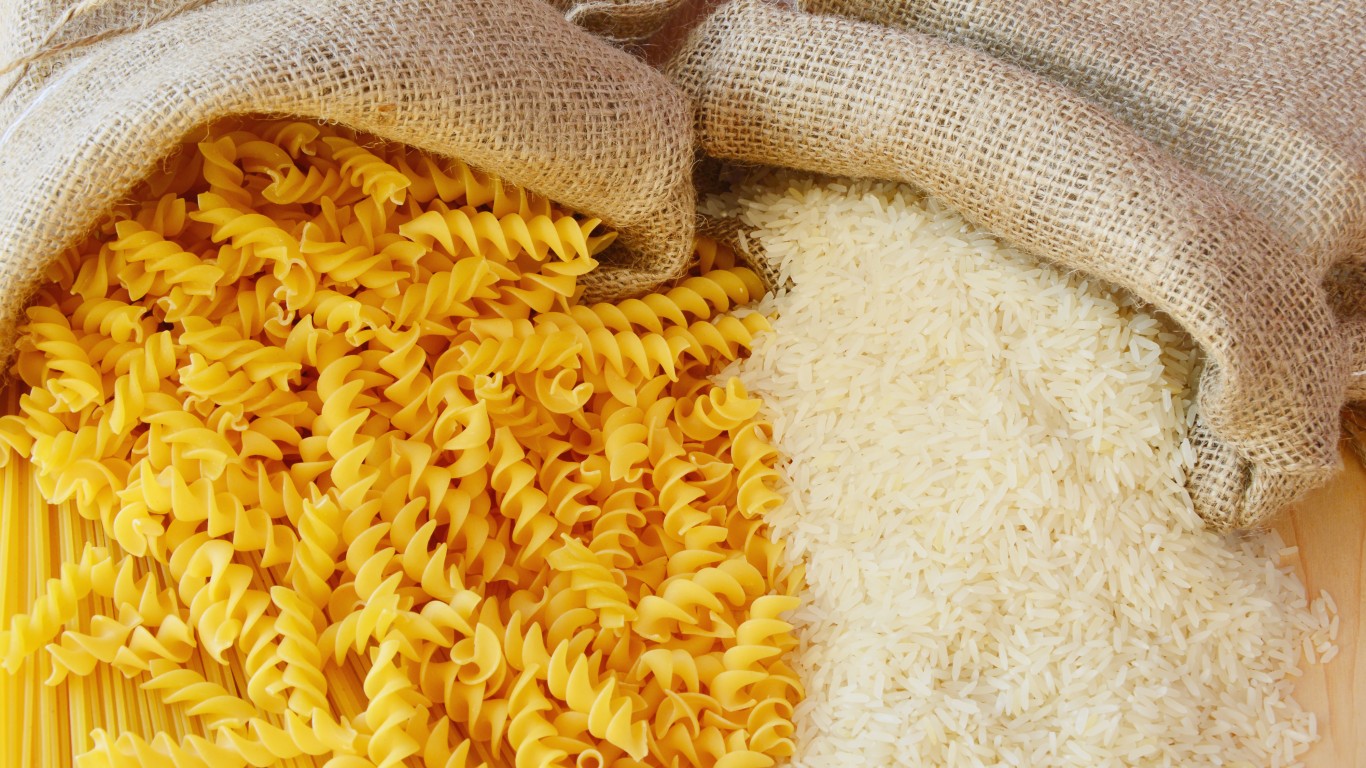
Food: Pasta and rice
Pasta appealed to 59% of the Coupon Follow respondents, with 54% saying they had bought more than usual. Dried pasta can last for at least a year or two and probably longer past its “best by” date if kept dry (fresh pasta, made with eggs, has a much shorter life, and should be refrigerated). White rice will last indefinitely if kept dry and in airtight containers to stop bugs from getting in. Brown rice might be healthier, but because it has a high oil content, it can go bad in a few months’ time.
[in-text-ad-2]

Food: Dried beans
Economical, easy to store, and full of protein and numerous important nutrients, beans showed the fourth-largest sales increase of any food product in the Nielsen survey. Besides having an indefinite shelf life, beans are extremely versatile, not just as a side dish but in soups, salads, stews, pasta dishes, and more.

Food: Chicken
One of the first things people noticed at the market after the pandemic hit was that refrigerated chicken cases were empty or only sparsely filled. This is partly because virus-related shutdowns or labor shortages interrupted the supply chain. But it was also likely due to the fact that poultry (chicken and turkey) is the most popular protein in America by a wide margin, so it makes sense that buyers would go for it first, with Nielsen reporting a 52% increase in sales over 2019.
[in-text-ad]
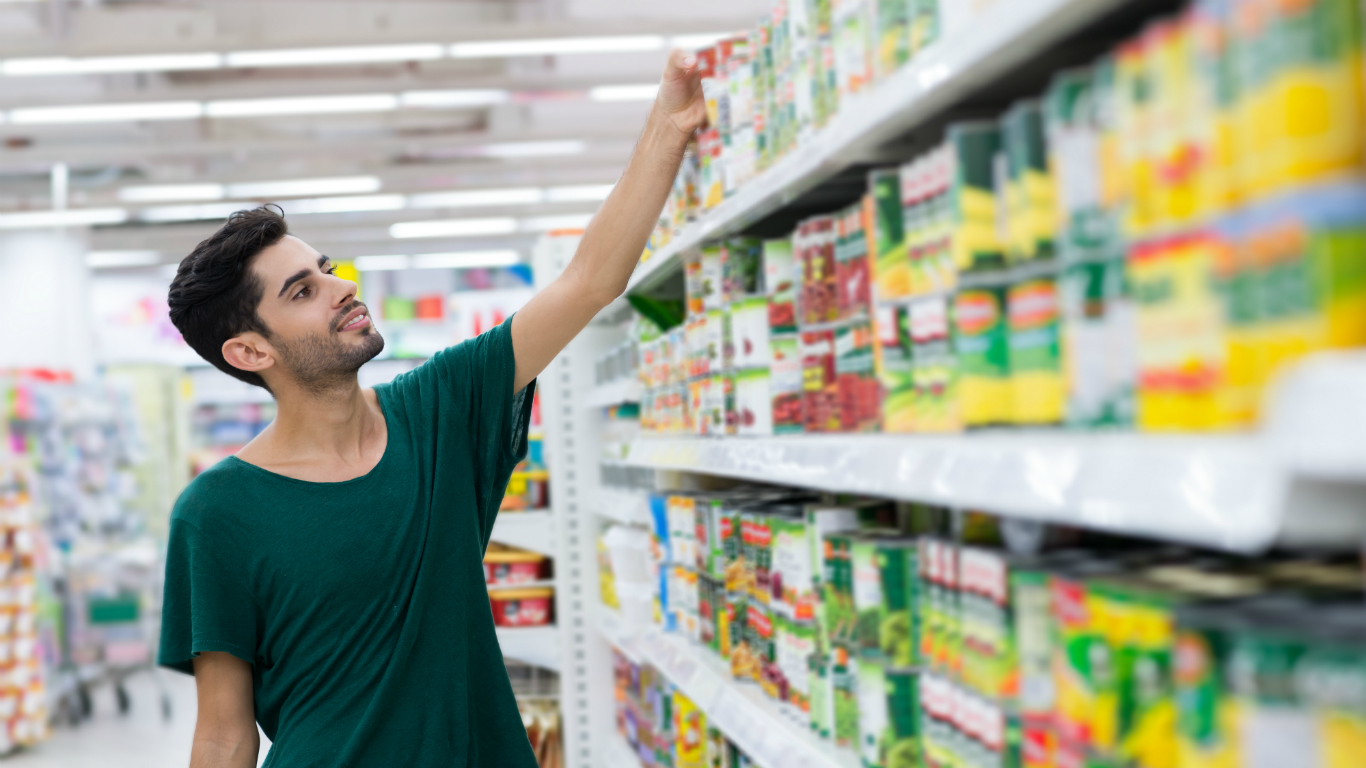
Food: Canned meat
Meats in tins, such as corned beef, Vienna sausages, cured ham, roast beef hash, and Spam — now available in 15 main varieties and seven Spam-adjacent products — may not be as popular with pandemic preppers as meat alternatives, but they showed a 188% increase in sales over last year.
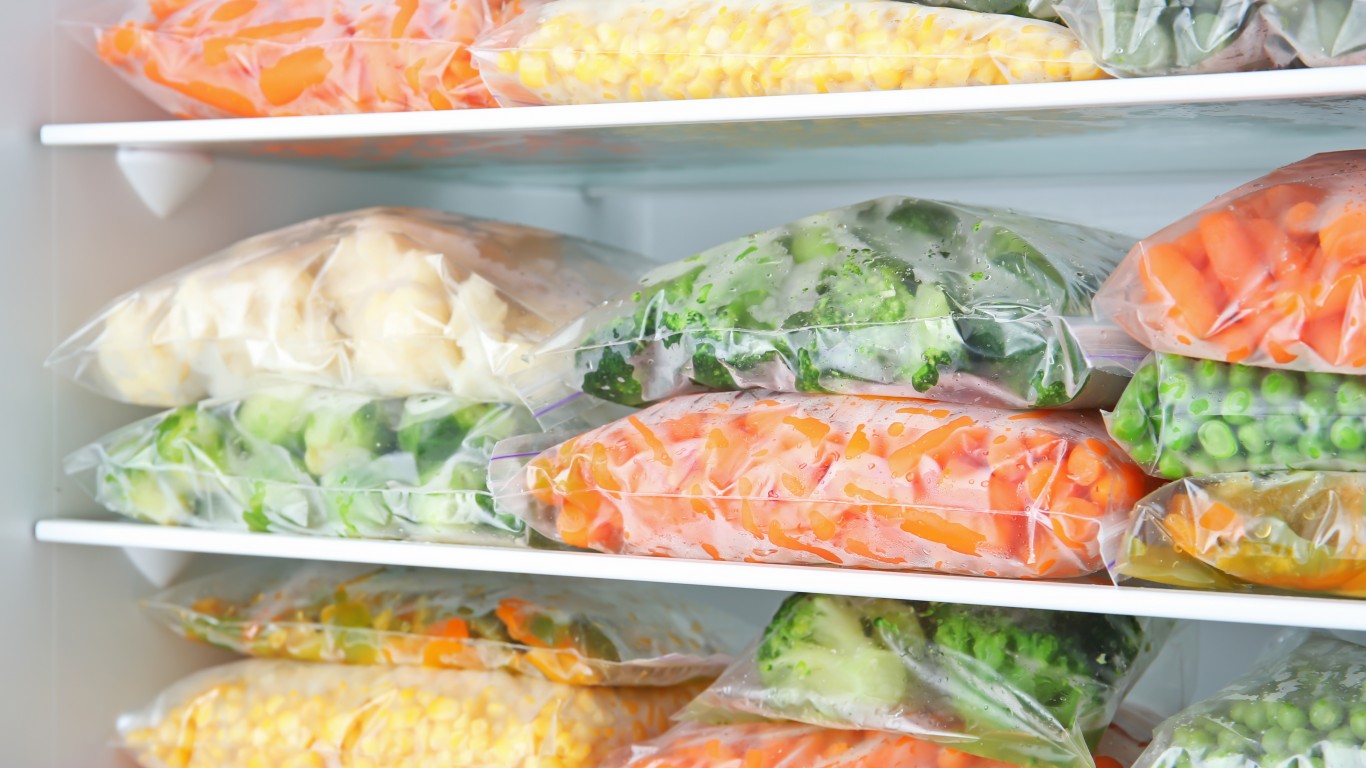
Food: Frozen vegetables
Some 52% of respondents to the Coupon Follow survey said they had bought veggies from the freezer case, and 39% said they bought more frozen veg than usual. The study also revealed that frozen vegetables were more popular with baby boomers and Gen Xers than with millenials. Frozen vegetables obviously have a long shelf life and bring color and nutritional value to the table in a time when fresh produce shopping might be more limited.

Food: Fresh vegetables
Despite the convenience (and often lower cost) of frozen vegetables, half the consumers contacted by Coupon Follow reported that they’d bought fresh ones in preparation for a lockdown. Nielsen‘s survey singled out only one variety as showing a slight increase (3%) in sales over 2019 — celery. It was also noted that “vegetable party platters” suffered a 7% decrease in sales.
[in-text-ad-2]
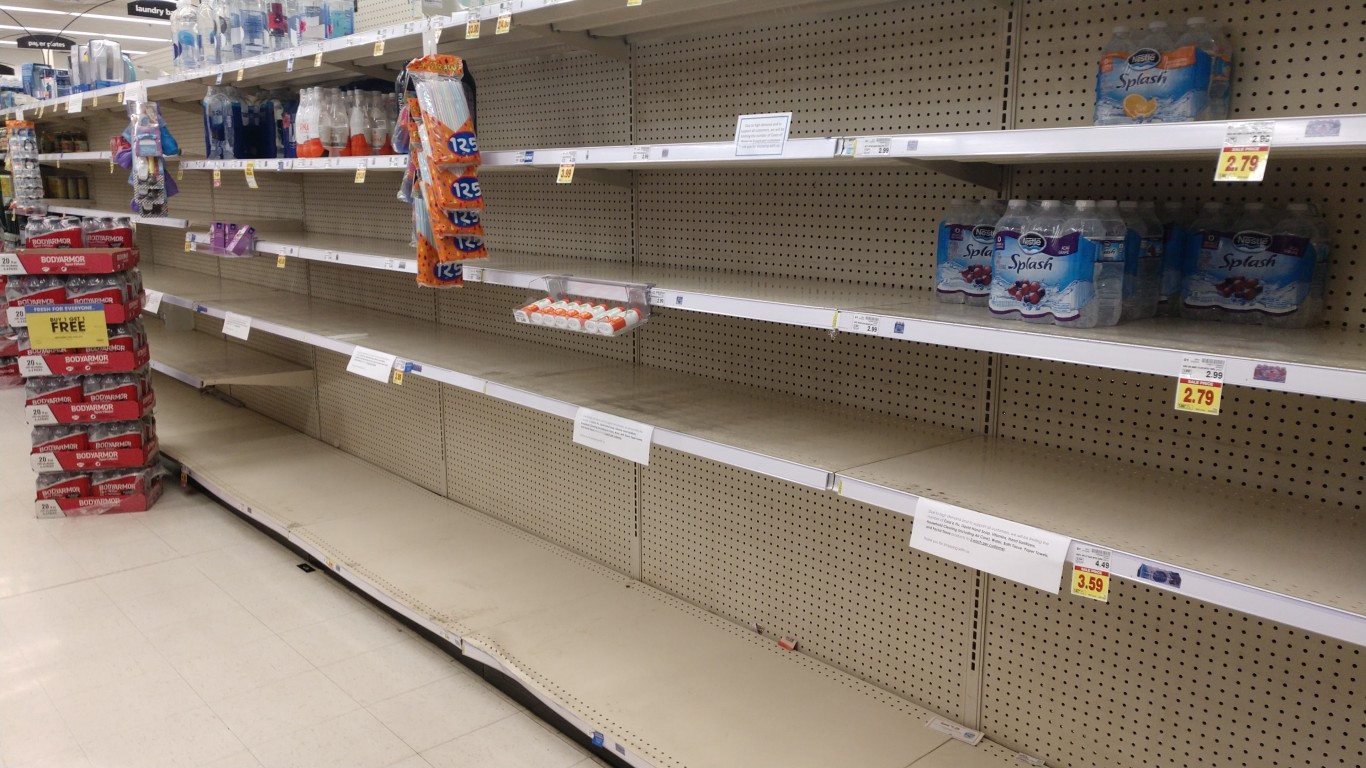
Food: Water
Half the respondents to Coupon Follow also reported having stocked up on water, buying 52% more than they usually would. The Nielsen survey found a 99% increase in water sales compared with last year. Health experts think this is silly, pointing out that the coronavirus doesn’t affect the water supply, and that buying water in a crowded store is probably riskier than drinking from the tap.
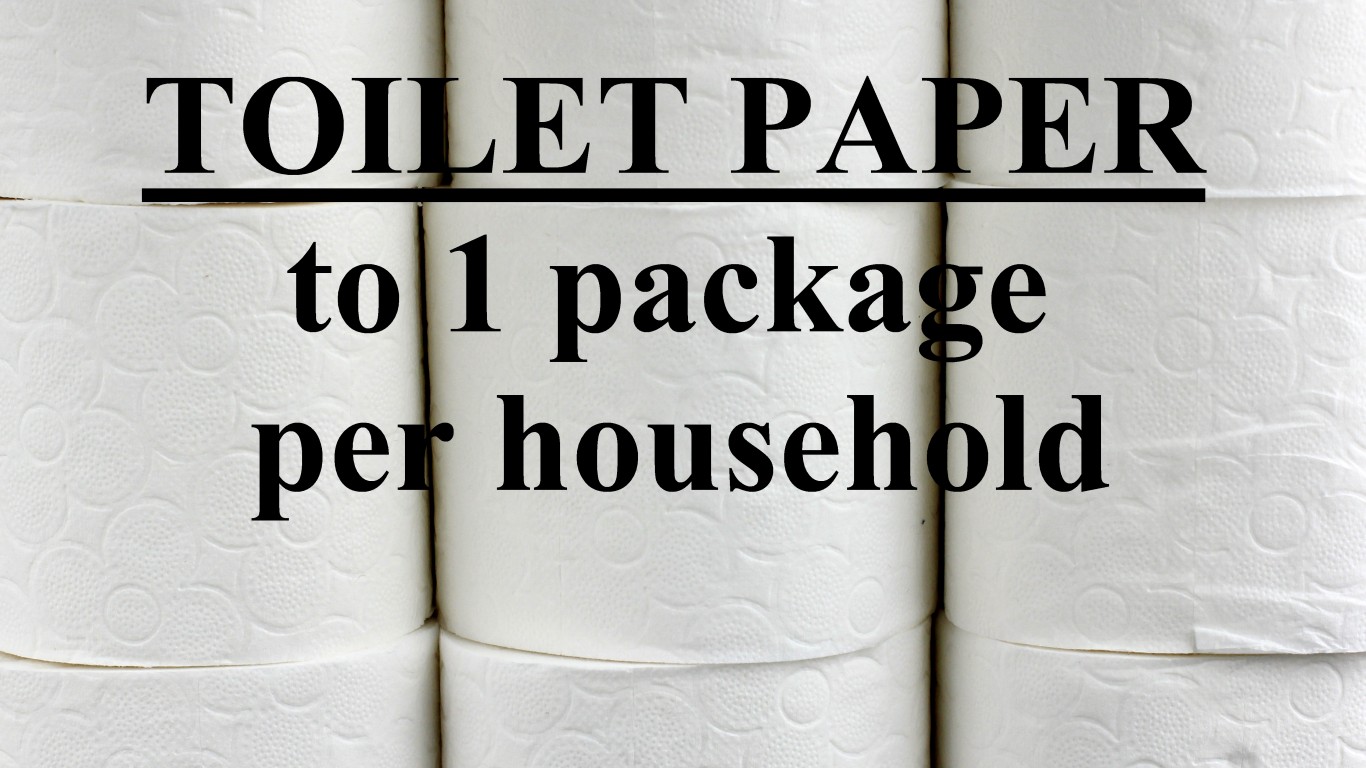
Health/household: Toilet paper
No other item has been more emblematic of pandemic panic buying than toilet paper. According to Coupon Follow, it was the most often-bought non-food item (63% of survey respondents picked some up), and it showed the second-highest jump in shoppers saying they purchased more toilet paper than usual at 56% (rice, lentils, and/or beans combined hit 57%). Exactly why people hoarded this sanitary necessity is something of a mystery. Some analysts suggest that buying it is a kind of “retail therapy,” somehow comforting people or helping them deal with uncertainty. Early hoarding may also have had a snowball effect: When people see supplies of a product dwindling, they tend to grab what’s left.
[in-text-ad]
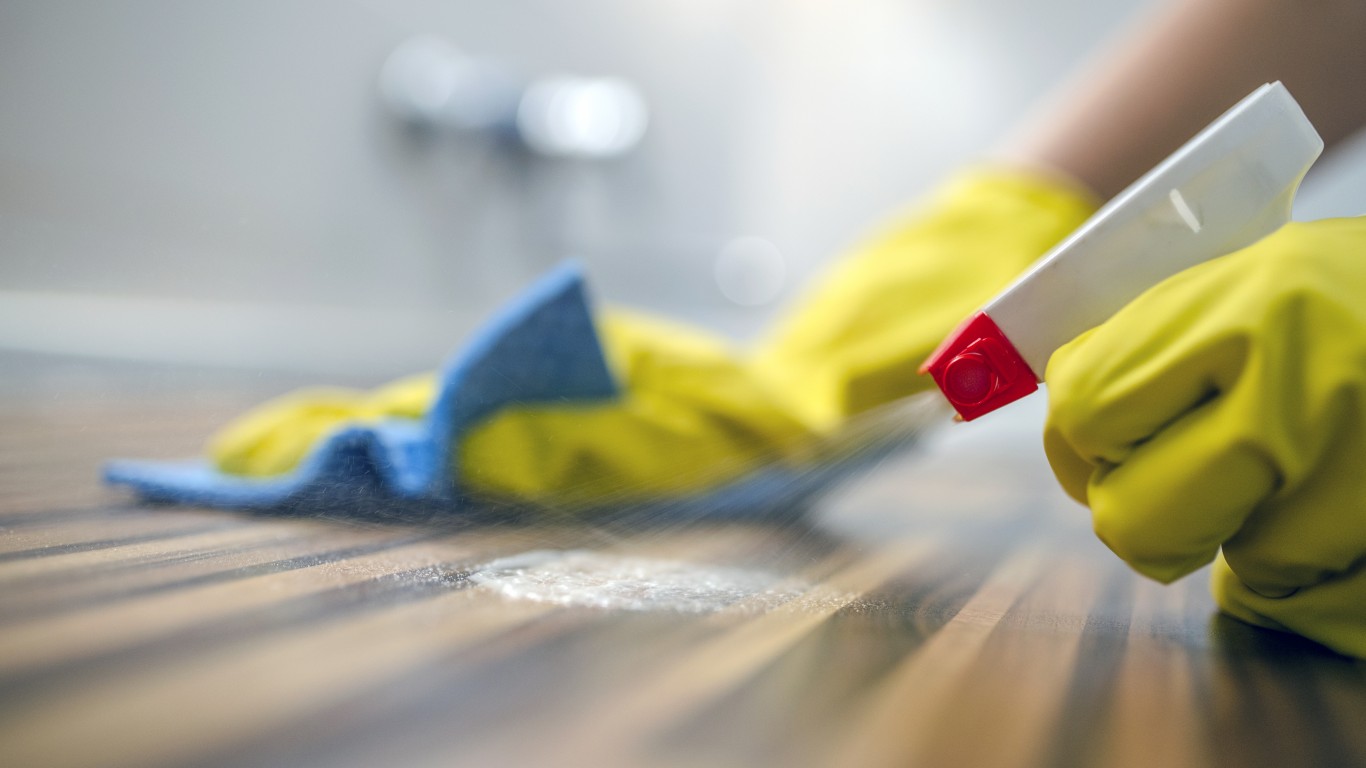
Health/household: Disinfectant sprays and wipes
The reason for the jump in sales for these items is obvious, which is why consumers bought a stunning 519% more aerosol disinfectants this year than last, according to Nielsen. In addition, 52% of those polled by Coupon Follow said they’d bought sprays or wipes. The EPA has published a five-page brand-specific list of wipes and other products that are strong enough to kill the coronavirus.
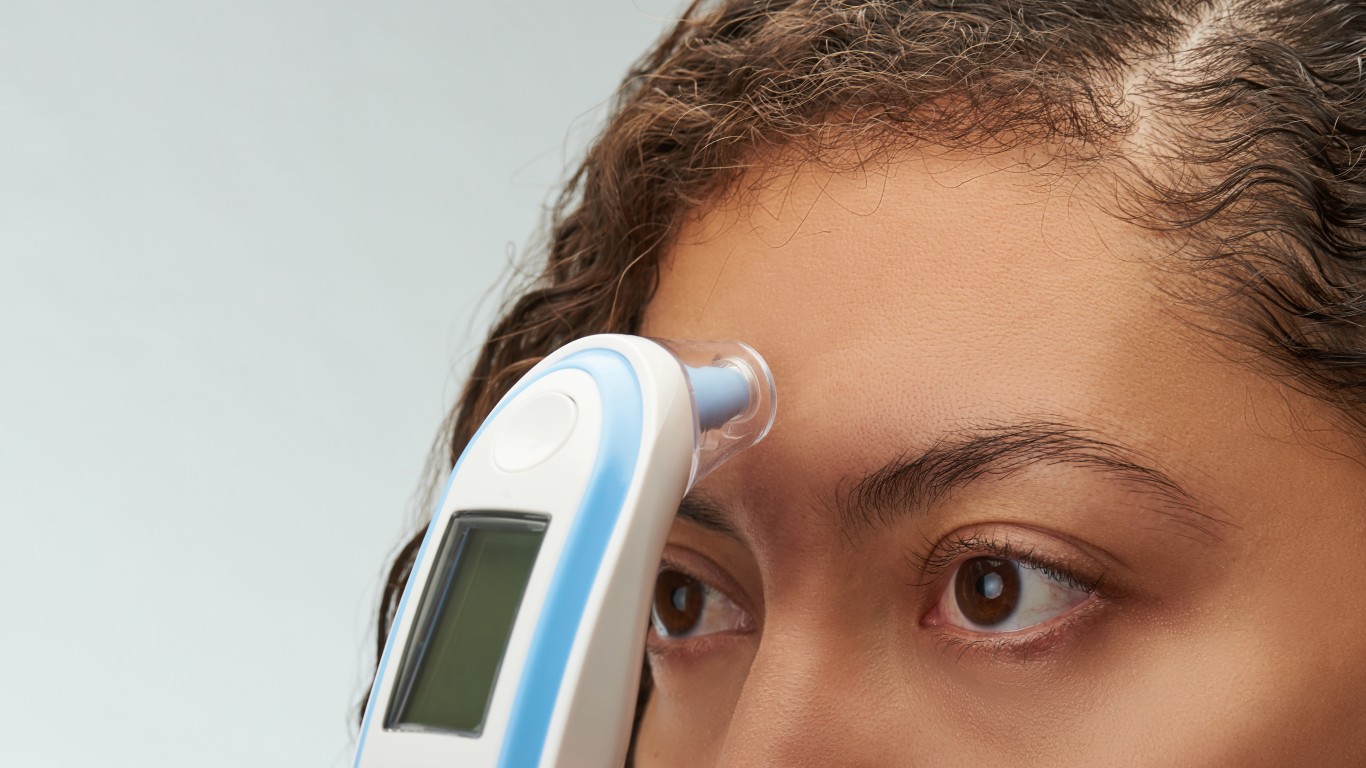
Health/household: Thermometers
After aerosol (spray) disinfectants, says the Nielsen report, the category that saw the most dramatic year-over-year jump in pandemic-related sales was thermometers. Places of business, public transportation, and other potentially crowded facilities around the world now check temperatures with touchless instruments, while many at home use conventional thermometers daily. While fever is a common symptom of COVID-19, medical authorities note that it’s possible to be infected without showing a fever, especially in the first few days after exposure.

Health/household: Paper towels
The Nielsen report notes that sales of these common paper products rose 154% this March compared with last year, and Coupon Follow records them as the second most popular non-food item consumers purchased as the pandemic hit. Some 57% said they’d bought them, and 42% said they bought more than usual. Besides their myriad household uses in ordinary times, paper towels can be used to apply disinfecting solutions to surfaces and are recommended as the best way to dry hands after a thorough washing.
[in-text-ad-2]
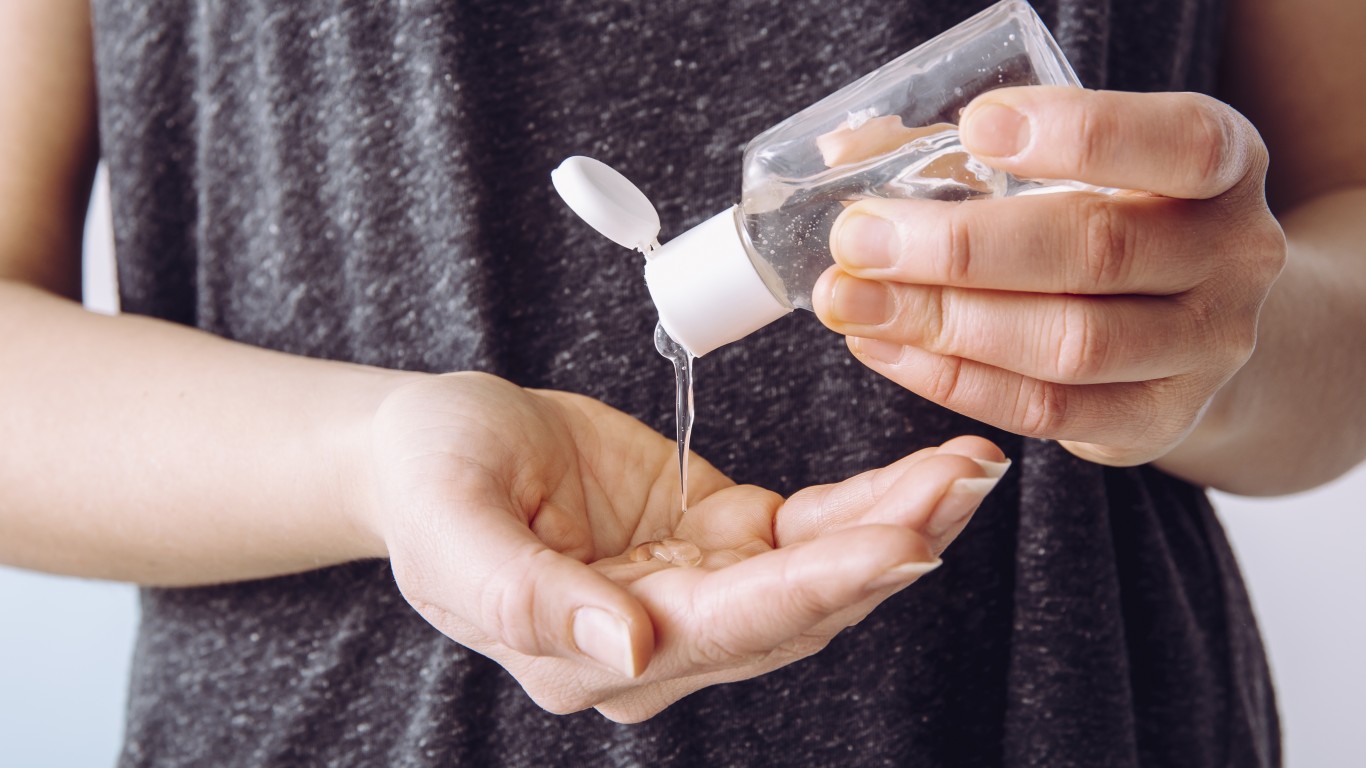
Health/household: Hand sanitizer
Coupon Follow found that respondents to its survey bought 54% more hand sanitizer in preparation for the pandemic than they would ordinarily. The Nielsen report logged a 208% increase in sales for such products. While the frequent use of hand sanitizers is recommended, the Centers for Disease Control and Protection (CDC) reminds us that proper handwashing with soap and water is still the best way to control virus transmission.
Health/household: Rubbing alcohol
Sales of rubbing alcohol rose 277% in mid-March over the same period in 2019, according to the Nielsen survey. Besides being good for disinfecting cuts and scrapes (if you don’t mind the sting), rubbing alcohol can be mixed with aloe vera gel for a do-in-yourself hand sanitizer. It is generally available in two strengths, 99% and 70% isopropyl alcohol (the latter diluted with purified water). The CDC recommends using the 70% version to disinfect high-touch surfaces, including smartphones (do not mix alcohol with bleach, as a dangerous chemical reaction could occur).
[in-text-ad]
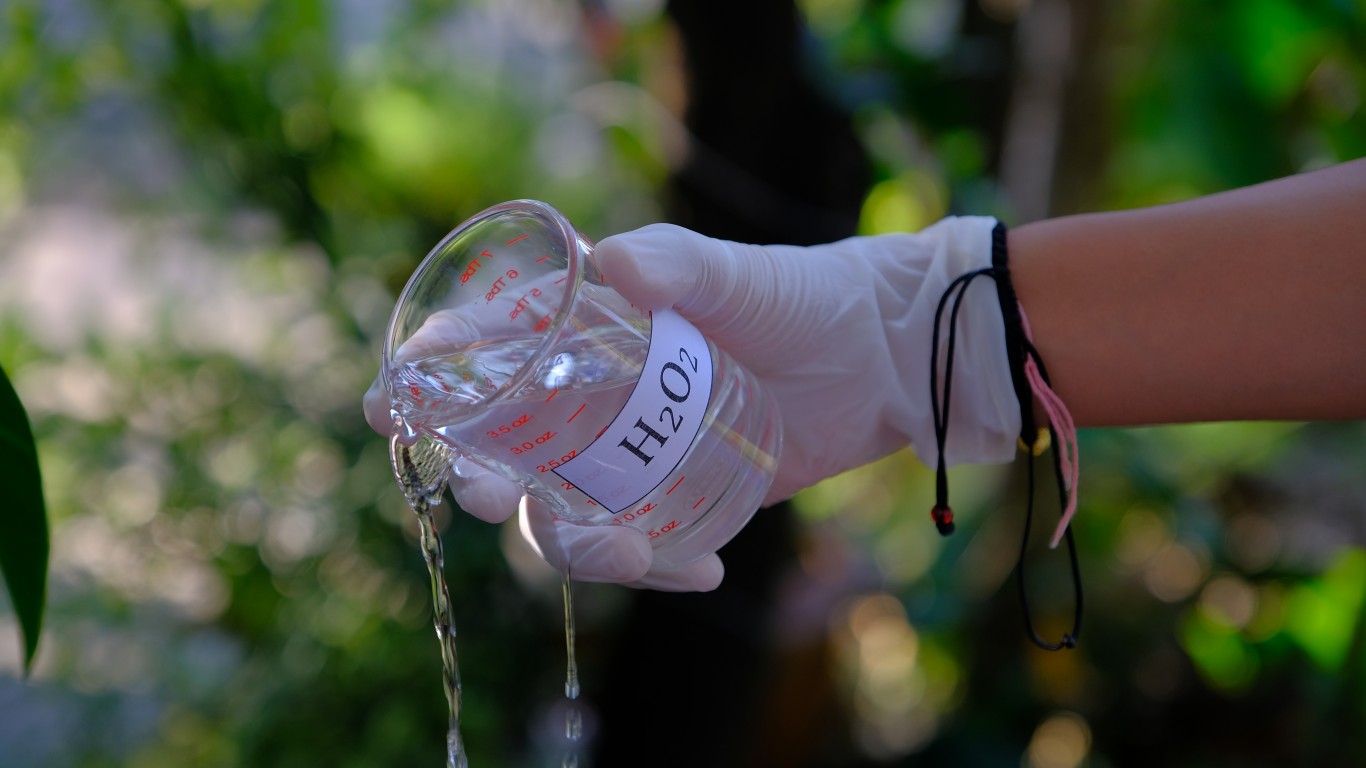
Health/household: Hydrogen peroxide
According to the CDC, “Commercially available 3% hydrogen peroxide is a stable and effective disinfectant when used on inanimate surfaces.” The agency recommends cleaning those surfaces first with soap and water, then pouring or spraying on the peroxide and wiping it with a paper towel or sponge. Frequent use on marble countertops might cause damage, and it can discolor some surfaces, so it should be used with care.

Health/household: Cold and flu remedies
These over-the-counter medicines saw a 159% growth in sales between March of last year and March of this year, according to Nielsen. Though none of them will combat COVID-19 directly, they can ease symptoms in less serious cases. Decongestants can help clear airways, and acetaminophen (like Tylenol) can treat fever and body aches.
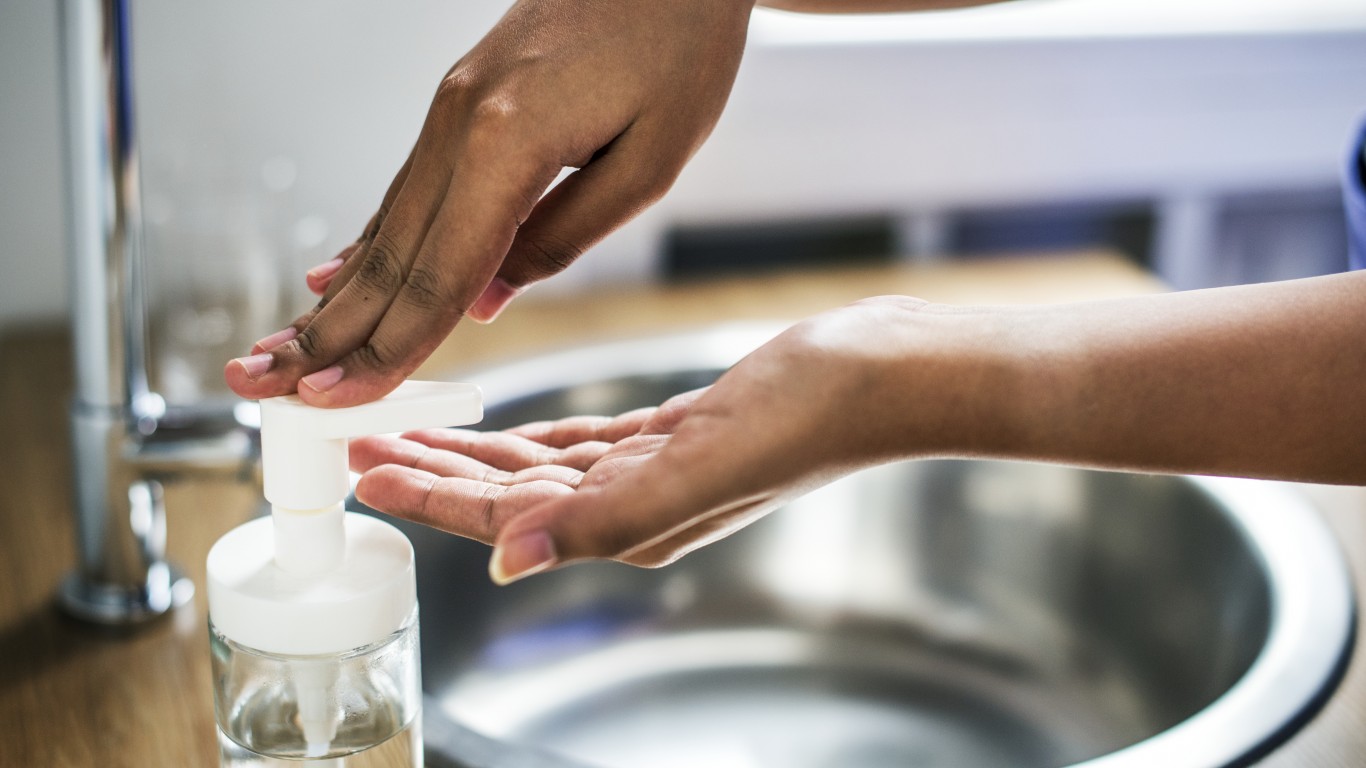
Health/household: Soap
Those surveyed by Coupon Follow bought 32% more soap than usual with the pandemic in mind, and according to Nielsen’s survey, there was a 183% increase in soap sales this March over last. Such increases are hardly surprising given that virtually every public health authority stresses the same thing over and over: The single most important thing we can do to avoid infection — more important even that wearing masks — is to wash our hands frequently.
[in-text-ad-2]
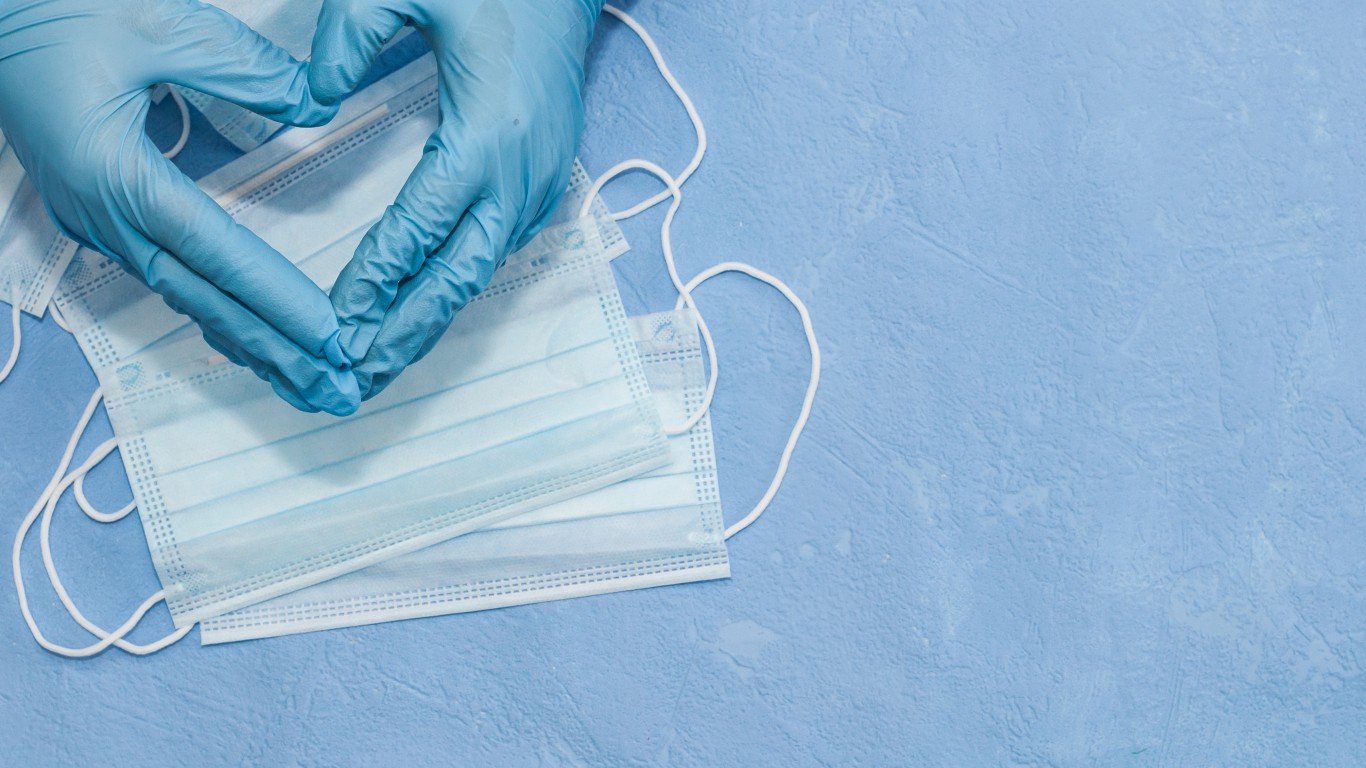
Health/household: Face masks and/or gloves
It may seem surprising that face masks don’t show up at all on the Nielsen list, but remember that it tracked buying habits for one week in mid-March, and until early April, CDC guidance recommended masks only for health care professionals or those who were already infected by the virus. Coupon Follow, on the other hand, notes that 30% of consumers it polled bought masks and/or gloves, in quantities amounting to 47% more than usual.
Credit card companies are at war. The biggest issuers are handing out free rewards and benefits to win the best customers.
It’s possible to find cards paying unlimited 1.5%, 2%, and even more today. That’s free money for qualified borrowers, and the type of thing that would be crazy to pass up. Those rewards can add up to thousands of dollars every year in free money, and include other benefits as well.
We’ve assembled some of the best credit cards for users today. Don’t miss these offers because they won’t be this good forever.
Flywheel Publishing has partnered with CardRatings for our coverage of credit card products. Flywheel Publishing and CardRatings may receive a commission from card issuers.
Thank you for reading! Have some feedback for us?
Contact the 24/7 Wall St. editorial team.